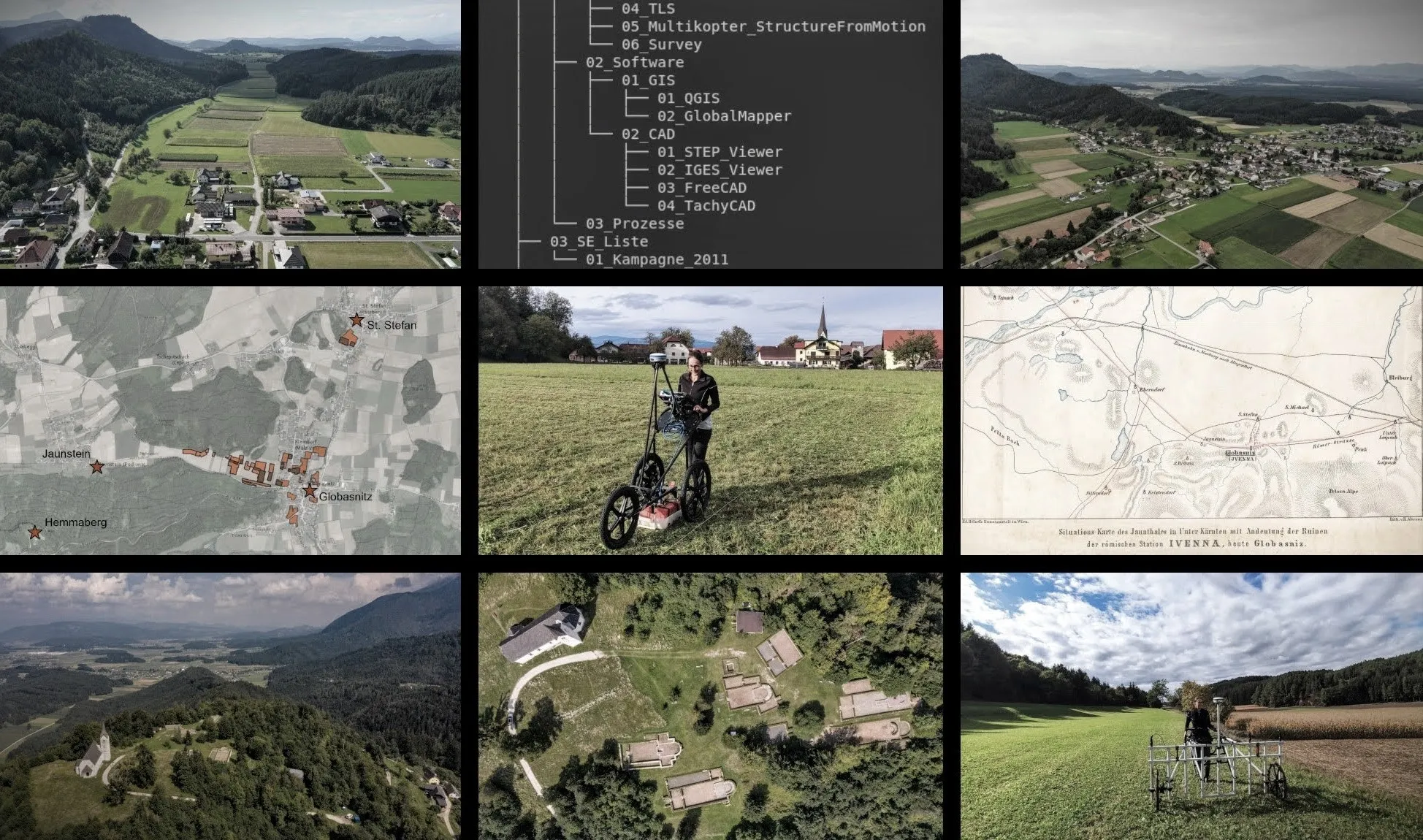
IUENNA – openIng the soUthErn jauNtal as a micro-regioN for future Archaeology
- Hosting organisations
- kärnten.museum and ÖAI - Österreichisches Archäologisches Institut
- Responsible persons
- Dominik Hagmann and Franziska Reiner
- Start
- End
The Go!Digital-3.0-project IUENNA (openIng the soUthErn jauNtal as a micro-regioN for future Archaeology) is an innovative project to strengthen the application of digital methods in archaeology in Austria by pursuing complex cultural-historical questions, shaping Digital Humanities in Classics, and securing cultural knowledge for the long-term. IUENNA is based on the archaeological micro-region of the Jauntal (Carinthia/Austria). It involves the State Museum for Carinthia (kärnten.museum/Landesmuseum für Kärnten – LMK), the Austrian Archaeological Institute (ÖAI) at the Austrian Academy of Sciences (ÖAW), the Austrian Centre for Digital Humanities and Cultural Heritage (ACDH-CH) at the ÖAW, the Federal Monuments Authority (BDA), and the archaeological company ARDIG.
IUENNA follows an extensive open science approach, using the Late Antique ‘pilgrimage center’ of the Hemmaberg with its decade-long excavations and related sites (Globasnitz/Iuenna, Jaunstein, and St. Stefan) as a case study. IUENNA will provide, for the first time in Austria for Classics, an outstanding model study and a sustainable long-term archive of an elaborated excavation at one of the most critical Late Antique sites of the Southeast Alpine region and its vicinity and integrate all data. All archaeological research data available will be digitized, structured in an all-new inclusive and hierarchically organized file folder system, and enhanced with metadata, which can serve as an example for future projects for Austrian archaeology and beyond. Data will be made available online in full open access using the repository ARCHE (A Resource Centre for the HumanitiEs) of the ACDH-CH.
The Hemmaberg is undoubtedly one of the best-researched Late Antique hilltop settlements of the 4th-6th cent. AD and a leading reference site for early Christianity in the Southeast Alpine region. The Hemmaberg and its late antique settlement (‘pilgrimage center’) is a world-renowned site featuring at least five early Christian churches, auxiliary buildings, and the Gothic pilgrimage church of St. Hemma and Dorothea, as well as the Rosalia Grotto. However, the Hemmaberg may not be seen on its own since it is part of a much more extensive settlement area with sites from prehistoric times to the early Middle Ages, which form the micro-region of the Jauntal with more than 2000 years of cultural history. Over 100 years of studies reflect a remarkable research history: After first investigations at the beginning of the 20th cent. by citizen scientists, continuous activities took place primarily from the later 1970s onwards by the LMK with a focus on Late Antiquity in the area of the Hemmaberg itself and Globasnitz/Iuenna, a Roman settlement/road station (including remains of the Roman link road Virunum—Celeia), and a massive Late Antique burial ground. Another nearby site is a recently discovered Late Antique (?) and massive Roman ‘super-villa’ near St. Stefan. At Jaunstein, archaeological features exemplify the early Middle Ages.
IUENNA is funded within the Go!Digital 3.0 programme of the Austrian Academy of Sciences (project number GD3.0_2021-24_IUENNA).
Team
- Dominik Hagmann Principal investigator 01 (project coordinator | kärnten.museum [lead-institution])
- Franziska Reiner Principal investigator 02 (ÖAI/ÖAW)